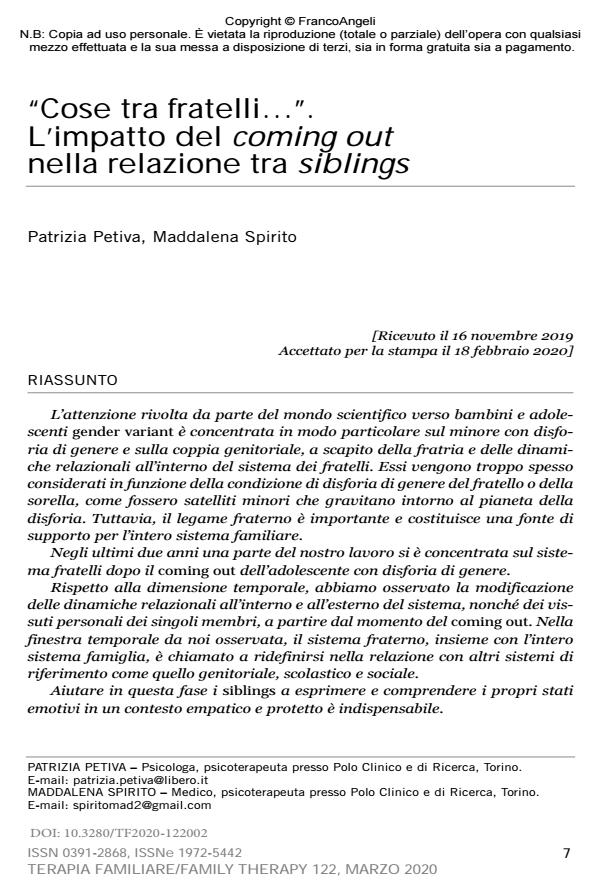Siblings matters: the impact of coming out on relationship between siblings
Journal title TERAPIA FAMILIARE
Author/s Patrizia Petiva, Maddalena Spirito
Publishing Year 2020 Issue 2020/122
Language Italian Pages 17 P. 7-23 File size 91 KB
DOI 10.3280/TF2020-122002
DOI is like a bar code for intellectual property: to have more infomation
click here
Below, you can see the article first page
If you want to buy this article in PDF format, you can do it, following the instructions to buy download credits

FrancoAngeli is member of Publishers International Linking Association, Inc (PILA), a not-for-profit association which run the CrossRef service enabling links to and from online scholarly content.
While the scientific literature about gender variant children and adolescents focuses mainly on the child diagnosed with gender dysphoria and on the parental couple, less attention is payed to the siblings and their relational dynamics. Siblings are considered too often exclusively depending on their gender variant brother’s/sister’s condition, as satellites which gravitate around Dysphoria planet. Instead, the fraternal relationship is an important support for the family system as a whole. In the last two years part of our work has been focused on the siblings system after the coming out. As regards the temporal dimension, we observed the modification of the relational dynamics within and outside the family system since the coming out. In this time frame the siblings’ system, as well as the whole family system, redefines its internal dimension and its relationships towards other reference points (parents, school, society). Helping siblings to express and comprehend their emotional states in a safe and empathic environment is indispensable during this phase. The clinic case is presented as an example about how when the family system tends to exclude the younger siblings from the dynamics started by the coming out of the older one as a consequence, younger siblings can experience social difficulties, trasgressive behaviors, bullying episodes towards peers.
Keywords: Siblings, gender variant children, coming out, adolescence, bullying.
- La magie de l’enfant dans la thérapie familiale pp.231 (ISBN:9782710146360)
Patrizia Petiva, Maddalena Spirito, "Cose tra fratelli.." L’impatto del coming out nella relazione tra siblings in "TERAPIA FAMILIARE" 122/2020, pp 7-23, DOI: 10.3280/TF2020-122002